#moscow under attack
Text
Moscow under attack
A drone can be heard flying into a building resulting in a massive explosion this morning.
The Drone used against Moscow today was almost 100% a Ukrainian “Beaver” Long-Range Attack Drone.
'Moscow City' is a very high-end business district just 2.8 miles from the Kremlin (4.5km). Multiple drone strikes reported.
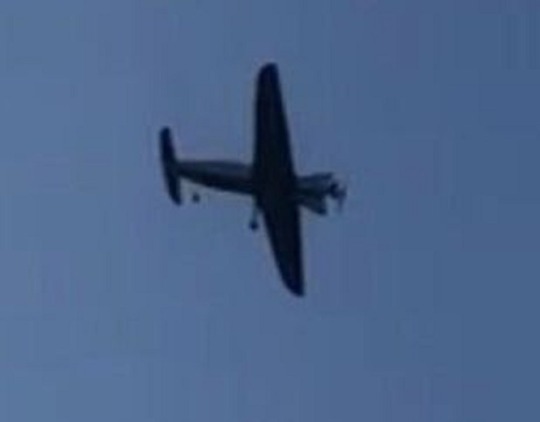


#ukraine#russia#moscow#moscow under attack#moscow city#russian war on ukraine#drone#drone attack#combat drone#beaver long-range attack drone#war#world at war#weapons#battle#combat#fighting
65 notes
·
View notes
Text

As hard as I try, I do not see a van Gogh self-portrait here...
#tajik#tajikistan#torture#moscow#moscow terror attack#moscow terrorist attack#moscow concert hall#moscow under attack#crocus city hall#crocus#crocus city#crocus hall#crocus city hall attack#russia#russians
1 note
·
View note
Text
A Chabad synagogue in Pomona, New York, burned to the ground on April 17th, along with its three Torah scrolls.
Torah scrolls are hand-written, hand-made, and kept in elaborately decorated cases or wrappings.
Many of them have long histories; my synagogue has two, I think, that were smuggled out of villages being destroyed in pogroms or in Nazi attacks. One of them is the only remaining piece of that village on earth.
Sometimes, the Torah scroll doesn't even belong to the synagogue, but is on loan from a place like the Memorial Scrolls Trust:
There's an entire Jewish holiday just for taking them out and dancing with them: Simchat Torah, "The Joy of Torah."
In fact, that was the holiday on which Hamas's invasion took place.
instagram
So it's a particular tragedy when a Torah is destroyed.
Chabad itself has a page about what goes into making just one Torah scroll:
"An authentic Torah scroll is a mind-boggling masterpiece of labor and skill. Comprising between 62 and 84 sheets of parchment -- cured, tanned, scraped and prepared according to exacting Torah law specifications -- and containing exactly 304,805 letters, the resulting handwritten scroll takes many months to complete.
"An expert pious scribe carefully inks each letter with a feather quill, under the intricate calligraphic guidelines of Ktav Ashurit (Ashurite Script). The sheets of parchment are then sewn together with sinews to form one long scroll. While most Torah scrolls stand around two feet in height and weigh 20-25 pounds, some are huge and quite heavy, while others are doll-sized and lightweight."
I learned all of this on Tumblr.
Once upon time, in people's "punch Nazis" days, I would've been able to find some mention on Tumblr of this synagogue burning.
There is none, so I'm posting about it.
And I'm going to quote Daniel Weiner, Rabbi of Temple de Hirsch Sinai in Bellevue, Washington, when his own synagogue was vandalized last November:
"It’s horrific and heartbreaking.... [Taking out your feelings about] what's going on in the Middle East by defacing a sacred space of a synagogue -- that’s the very definition of antisemitism."
I'm also posting about the Kehillat Shaarei Torah Synagogue in Toronto, whose windows were broken on Friday, April 19th, by someone who also tried to break the front door down.
And the April 15 graffiti outside a Bangor, Maine synagogue that said, "Nazi Israel 30K murdered," next to a crossed-out Star of David. The same synagogue faced pro-Hamas flyers plastered around it in November.
I was going to include all the synagogues vandalized over the past six months. But there are way too many. Several every week. Lots are swastikas.
I'll go back to just doing attacks on and near synagogues.
Someone has to talk about the 1-year-old who was stabbed outside Temple Beth Zion-Beth Israel (BZBI) synagogue, in Philadelphia, on April 13th.
The foiled terrorist attack on a Moscow synagogue on April 11th.
The man who, on April 9th, screamed at the rabbi at Moldova's Great Synagogue, "What are you doing here? How come no one has finished you off for everything you are doing to the Palestinians?" Just one week after people had vandalized a Holocaust memorial in nearby Soroka, and sprayed "Free Palestine" on it.
The Oldenburg, Germany synagogue that was firebombed on April 5th.
The Florida Las Olas Chabad Jewish Center, which on March 16 burned, but not to the ground. The Torah scrolls were safe, and no one was hurt, but the back of the building was severely damaged.
The planned-but-thwarted-on-March-7th ISIS massacre in a Moscow synagogue.
The stabbing of an Orthodox Jew in Switzerland on March 5th. (He was badly injured, but expected to survive.)
A man leaving a synagogue in Paris was beaten on March 3rd.
People set the courtyard of a synagogue in Sfax, Tunisia on fire on February 27th. Firefighters managed to put the fire out before it consumed the inside of the building.
The synagogue is no longer used; there are no Jews left in its area, and fewer than 1,000 Jews left in Tunisia overall.
(Thousands of Tunisian Jews were sent to work camps during the Holocaust. Antisemitism across the Middle East continued to increase rapidly for decades. By the 1970s, 90% of Tunisian Jews had fled to France or Israel.)
On February 18, an Orthodox Jew leaving Synagogue of Inverrary-Chabad in Lauderhill, Florida, was beaten by an attacker yelling racial slurs.
Someone deliberately chose International Holocaust Remembrance Day, January 27, to smash all the windows in the front of Sgoolai Israel Synagogue in downtown Fredericton, New Brunswick.
On December 29, Turkey arrested 32 people linked to ISIS who were planning attacks on synagogues and churches.
On December 17, a man drove a U-Haul truck up onto the sidewalk between a barrier and the front door of the Kesher Israel Congregation in Washington D.C., got out, and started yelling "Gas the Jews." He also sprayed a foul-smelling substance on two people leaving the synagogue.
December 17 also saw 400 synagogues across the United States receive bomb threats.
On December 11, a man attacked an elderly couple on their way into a synagogue in Los Angeles, screaming, "Give me your earrings, Jew!!" and beating one of them bloody with a belt. (Happily, he chased the guy down the street, and caught him when his pants fell down.)
On December 10, a 16-year-old was arrested in Vienna for planning an attack on a synagogue.
On December 8, on the first night of Hanukkah, 15 synagogues in New York State received bomb threats. And someone screamed, "Free Palestine," and fired shots outside of Temple Israel in Albany, NY. Which has a preschool that was in session.
Meanwhile, the five Jews left in Egypt were canceling public Hanukkah candle-lighting at their synagogue out of fear of reprisals. Particularly after two Israelis in Alexandria had been gunned down by terrorists on October 8. (While Israel was still fighting Hamas in Israel.)
On November 15, a terrorist group set the only synagogue in Armenia on fire.
Armenian Secret Army for the Liberation of Armenia (ASALA) has a history of working with the Popular Front for the Liberation of Palestine (PFLP).
(PFLP is part of Hamas's network of groups. Samidoun is their nonprofit arm - which is why Germany banned Samidoun last year, although it's still active in many other countries.
PFLP is also actively supported by the Palestinian Youth Movement (PYM), a diaspora nonprofit group, and Within Our Lifetime (WOL), an SJP spinoff in NYC.)
On November 11, halfway through Shabbat services, police asked Central Shul in Melbourne, Australia to evacuate "as a precaution" due to a "pro-Palestinian" protest that had chosen the neighboring park as its gathering place. Australia has seen some very outspoken antisemitism at protests, including the march shortly after October 7 that chanted "Gas the Jews."
Also on November 11, protesters targeted a synagogue along a march route. They sat in their cars, spraying green smoke and shouting at people leaving the synagogue. The march itself featured a record number of horrifying signs and chants.
On November 7th, Congregation Beth Tikvah in Montreal was firebombed, and the back door of the Jewish organization across the street (Federation CJA) was set on fire.
On November 4, protesters chanted "Bomb Israel," and burned an Israeli flag outside the only synagogue in Malmo, Sweden.
During October, there were 501 antisemitic acts under investigation in France in just three weeks, including groups gathering in front of synagogues shouting threats, and graffiti such as the words “killing Jews is a duty” sprayed outside a stadium.
On October 18, people firebombed a synagogue in Berlin after homes all over the neighborhood were graffitied with stars of David.
And also on October 18, hundreds of "pro-Palestine" rioters attacked the Or Zaruah Synagogue, in the Spanish enclave of Melilla in North Africa, while worshippers were inside.
Based on the video, they seem to have blocked the synagogue entrance completely, while screaming "Murderous Israel" and waving Palestinian flags. (Melilla is an autonomous zone belonging to Spain. It borders Morocco.)
On October 17, during pro-Palestinian protests, hundreds of rioters set fire to Al Hammah synagogue, an abandoned house of prayer in central Tunisia. They hammered down the building’s walls and raised a Palestinian flag on the building. Police did not intervene.
The Facebook page "Tunigate", which has around 88 thousand followers, published a video of the assault. So did "Radio Bousalem”, with 83 thousand users. The vast majority of comments on these videos welcome these acts. The building was severely damaged and almost completely razed to the ground.
On October 15, bomb threats were sent to many East Coast synagogues. Attleboro synagogue Congregation Agudas-Achim received one of the emails, which read, "The bombs will blow up in a few hours. A lot of people will die. You all deserve to die."
On October 8 -- again, while Hamas was still in Israel -- Madrid’s main synagogue was defaced with graffiti that read “Free Palestine” next to a crossed-out Star of David.
And on October 7, an assailant in Rockland, NY fired a BB gun at two women entering a synagogue. Later in the month, a banner at the Stephen Wise Free Synagogue in the area was vandalized with the words, “Fuckin kikes."
#if you have used “Free Palestine” as if it's a sort of verbal assault you can shout in comments or scribble over flyers#if you are unwilling to hear what the Jewish term Zionism means to the people who use it#if you cannot name one Palestinian human rights activist#and most of all if you don't know how Hamas abuses Palestinians and you still think it's The Resistance#then you. are. the. problem.#if you don't know people in gaza have been protesting Hamas and blaming it for deliberately instigating a war they don't want#if you don't know how often they've spoken out about Hamas stealing aid and selling it to them#and especially if you don't want to believe me much less find Palestinians in Gaza to listen to#also if you didn't know about any of the stuff in this post BUT you have taken it upon yourself to tell Jews that “it's not antisemitism”#like seriously everyone deal with your learned distrust of Jews challenge#wall of words#fire tw#guns tw#violence tw#Instagram
721 notes
·
View notes
Text
[NYTimes is Private US Media]
On Saturday, Bidzina Ivanishvili, the founder of the governing Georgian Dream party, who built his fortune in banking, metals and real estate in Russia, said that the people of South Ossetia, which broke away from Georgia in the 1990s and expanded with Russian support in 2008, should receive an apology for the war that eventually broke out.
His comments at a rally in Gori, a town that was briefly occupied by Russian forces in 2008, were quickly condemned by pro-Western activists and the opposition. They also highlighted how Georgia’s relationship with the West has deteriorated over the past months.
On Monday, the United States announced that it had imposed sanctions against two Georgian officials and two activists associated with a pro-Russian political group that it said were involved in violent suppression of protests this year.[...]
In a statement, Mikheil Saakashvili, who was Georgia’s president at the time of the 2008 war [and Governor of the Odesa Oblast in Ukraine from May 2015 until November 2016, before being stripped of Ukrainian Citizenship], called Mr. Ivanishvili’s statement “an unprecedented betrayal” and “an insult to the memory of the heroes who sacrificed for our country.”
“He asked Georgians to apologize for the invader,” said Mr. Saakashvili, who is serving a six-year sentence in Georgia on charges related to abuse of power that he says were politically motivated.[...]
In 2009, an independent fact-finding mission set up by the European Union found that the war was initiated by “a sustained Georgian artillery attack” that was not “justifiable under international law” but that “much of the Russian military action went far beyond the reasonable limits of defense.” The report also accused all sides, including separatist formations, of violating international humanitarian law.[...]
Mr. Ivanishvili, who entered Georgian politics in the early 2010s, promised a “Nuremberg trial” against members of the United National Movement, a pro-Western party that was in power during the 2008 war, after parliamentary elections next month.
After the elections, he said, “all the perpetrators of the destruction of the Georgian-Ossetian brotherhood and coexistence will receive the strictest legal response.” He called the opposition “criminals” and “traitors” who “in 2008 burned our Ossetian sisters and brothers in flames.”
“We will definitely find strength in ourselves to apologize,” said Mr. Ivanishvili, who is officially an honorary chairman of the governing party, but who is widely believed to be its shadow leader.[...]
In May, defying large-scale protests, the Georgian government passed a law that aims to limit the influence of pro-Western nongovernmental groups and media outlets in the country.
16 Sep 24
93 notes
·
View notes
Note
I in no way mean to be disrespectful, I hope you and your family are doing well and I’m so sorry for the recent attacks. I’m just ignorant and want to know what would happen if Ukraine surrendered to Russia?
I hope you are safe from bombing and air raids 🙏🙏
Hi! Thank you <3 And don't worry, that's a good question.
What I'm 100% sure would happen in case of Ukraine's surrender, even under the most optimistic scenario:
We'd have to give up the entire country, not just a part of it. Russia always comes back for more. It's been following the same pattern with different countries forever. With Ukraine, it got a pretty decent chunk back in 2014. That land continued to belong to Ukraine on paper only - in reality, it was fully under Russian control, and no one really fought for it any longer. Was Russia satisfied with it? No. It kept preparing and then attacked to overtake even more land. It will never have enough, so to give up now means to acknowledge that the entire Ukraine will cease to exist as a country, whether right away or after Russia starts another war against us.
Ukrainian language, culture, and heritage would be destroyed completely in the coming years. Our history - and the history of the world children are taught - will be re-written. There is a reason why the majority of countries that were a part of USSR speak primarily Russian. Russia keeps carefully erasing other languages and culture, it's been doing it for ages. It's doing it right now on the occupied territories.
Pro-Ukrainian activists and people of note would be persecuted, kidnapped, tortured, and killed. This is also a pattern, it happens everywhere Russia invades. I know many examples personally.
We'd be gradually cut off of the outside world. Like, Russia has banned major fanfiction sites; it's trying to block YouTube and other platforms. The transformation into a semblance of North Korea would be inevitable.
Ukrainians would be treated as third-rate non-humans on their own territory. Again, it's been happening everywhere Russia barges into.
Ukraine would be used as a military base to attack other countries, and Ukrainians would be forced to become Russian soldiers.
As for the rest, it could go in several ways. Maybe Russia would want to show how 'amazing' it is, so it'd turn Kyiv into a second Moscow, creating different well-paid positions and opportunities to suck up to Kyiv residents and to prove its hypocritical benevolence.
On the other hand, it could just as well turn the entire country into a concentration and extermination camp. Russia has been torturing, raping, degrading, and murdering our people everywhere. Stealing their homes, kidnapping children, etc. and etc. I have a huge number of friends, people I know, or their friends who shared their stories, and each of them has been absolutely horrific.
My Mom's colleague, for example, used to live near Bachmut. When Russians came in, they immediately began to hunt down anyone related to the police and the military and killing them or actually demanding ransom for them. They kidnapped this colleague's friends, a married couple, kept them in a dog's kennel, pissed on them, beat them up, and raped the wife repeatedly. At that point, the colleague managed to flee the area, and she has no idea as to what happened to them afterward.
This could very well be the fate of our country in case of our surrender since the world obviously doesn't care and wouldn't bat an eye at the millions suffering and dying, kind of like it's happening now.
So surrendering is dangerous because we might cease to exist, but perhaps we are just prolonging the inevitable. A tiny country with a pathetic level of support cannot win against a giant that has a ton of everything and whose allies keep sending it even more weapons of destruction. Oh, and let's not forget how Russia keeps producing more and more weapons because the US and EU keep selling it the parts it needs for missiles and other stuff, and how Ukraine, after seemingly getting help from these US and EU, is forbidden to use it to strike Russia back.
It's all a joke to everyone but us, so I honestly don't envision a positive outcome at all. In the end, as long as our heroes are determined to defend Ukraine, we'll keep trying to hold on. The future will show what it'll lead us to.
113 notes
·
View notes
Text
While Russia has made a slew of outlandish assertions about Ukraine, including that the country is led by a Nazi regime, few Russian narratives have entrenched themselves more thoroughly in the Western far right and far left than that Ukrainian President Viktor Yanukovych was illegitimately removed from office in a Western-backed coup in February 2014. This claim has been a key element of Russian propaganda, echoed in the United States by such public figures as independent U.S. presidential candidate Robert F. Kennedy, Jr., filmmaker Oliver Stone, and Cato Institute defense expert Ted Galen Carpenter.
The idea that Yanukovych’s removal was illegitimate is easily refuted: After Yanukovych abandoned his office by fleeing from Ukraine to Russia, he was stripped of the presidency by a constitutional majority in parliament. Even Russia joined the rest of the world in recognizing the new Ukrainian government a few months later.
But the truth underlying the events of February 2014 is far more interesting: The preponderance of evidence suggests that it was Moscow itself that triggered Yanukovych’s departure in order to launch a pre-arranged Plan B—the invasion of Crimea and an engineered “uprising” in eastern Ukraine—after Moscow’s Plan A—a new treaty with a pliant government in Kyiv that placed it under Russia’s de facto control—was about to fail. Indeed, the timeline shows that preparations for Plan B were well underway before Yanukovych’s removal from office. All this, in turn, demonstrates that Russian President Vladimir Putin’s plans for Ukraine were far more predatory all along than merely preventing the country’s drift toward NATO, as many of Russia’s Western apologists contend.
The Maidan mass protests—which lasted from November 2013 to February 2014 in Kyiv and many other cities across Ukraine—erupted when Yanukovych pivoted from a wide-ranging association agreement with the European Union to a similar one with the Russian-led Eurasian Economic Union. Ukraine’s move toward closer relations with the EU was the trigger for Putin’s Plan A: the transfer of Ukraine to the Kremlin’s sphere of influence. To stop Yanukovych’s deal with Europe, Moscow pressured Kyiv with trade sanctions, including an embargo of key Ukrainian exports to Russia. In return for joining Russia’s economic bloc, Moscow offered Kyiv an emergency $3 billion loan to shore up a budget drained of resources by Yanukovych’s corruption. At the same time, Russia pressured him to violently crush the Maidan, suppress the pro-Western opposition, and thereby alienate him from the West. Toward this end, officials from the Russian security services and Putin aide Vladislav Surkov were frequent visitors in Kyiv.
Yanukovych, who had never established an absolute autocracy on the Russian model, resisted an all-out crackdown against the hundreds of thousands of largely peaceful protesters throughout western and central Ukraine. As his final actions as president would show, he also retained the hope of being able to balance Russian influence with continued relations with the West. It was to prevent that outcome that Moscow triggered his departure.
In all, more than 100 civilians and 13 police and security service operatives would die during the Maidan. Yet while the security services brutally attacked protesters all throughout the Maidan, the main deadly violence only occurred between Feb. 18 and Feb. 20, 2014—precisely the time when negotiations between the government and opposition over a political compromise were gaining traction. Brokered by the foreign ministers of Poland, France, and Germany—Radoslaw Sikorski, Laurent Fabius, and Frank-Walter Steinmeier, respectively—with Putin envoy Vladimir Lukin present as well, negotiations had begun to gain momentum on Feb. 17. Over the next three days, 78 protesters and 11 police were killed.
This level of violence shocked and angered Ukrainian society. In response to mounting public fury and the threat of extensive Western sanctions, Yanukovych intensified negotiations on a compromise and moved to release detained and imprisoned protesters. For Putin, however, any path of negotiated compromise was a clear setback to his Plan A, which would have locked Yanukovych and his government into complete dependency on Moscow.
As deadly violence engulfed the streets of Kyiv, Yanukovych signaled his agreement to a broad government of national unity. After the opposition turned down the top post of prime minister, Yanukovych indicated that he would nominate Serhiy Tihipko, the billionaire former head of Ukraine’s central bank. For the Russians, Tihipko was a red flag: He had denounced politicians who were willing to “sacrifice Ukraine’s territorial integrity for electoral votes,” was a proponent of Ukraine’s integration with the EU, and opposed making Russian the second state language.
Coupled with the potential transfer of key ministries into the hands of the opposition and new elections by year’s end, Yanukovych’s willingness to compromise set off alarm bells in the Kremlin, whose representative, Lukin, withheld his signature from the agreement. Once before, during the 2004 Orange Revolution, Yanukovych had disappointed Putin by refusing to use brute force to stay in power after falsified presidential elections. When Yanukovych eventually returned to power by legal means in 2010, he further angered Russia with negotiations toward a free trade agreement with the EU, which he only aborted after extensive Russian economic sanctions and embargoes on Ukrainian exports. To Putin, Yanukovych was again vacillating and refusing to show an iron hand.
On the morning of Feb. 20, after two days of violence had failed to crush the Maidan and with Yanukovych on the verge of signing a compromise agreement with the opposition, the Kremlin pivoted. A delegation of Russian Federal Security Service officials, including Sergei Beseda, head of the Fifth Service in charge of international operations, arrived in Kyiv—the third such visit since the Maidan began. Officially there to “protect Russian diplomatic facilities,” Beseda’s real mission was to advise hardliners inside Yanukovych’s leadership team, block a compromise, and, failing that, set in motion a Plan B—Russia’s ambitious plot to splinter Ukraine.
As the EU envoys met with Yanukovych and opposition leaders to finalize the deal—and as Yanukovych did not agree to a request by Beseda to meet—the hardliners in the government escalated, presumably under Moscow’s instructions. Then-Ukrainian Interior Minister Vitaliy Zakharchenko and Security Service chief Oleksandr Yakimenko unleashed a brutal attack on the protesters in an apparent attempt to unravel the deal that that was in the process of being struck.
Indeed, Feb. 20 proved to be the bloodiest day, with police snipers shooting 48 protesters.
Zakharchenko’s role in the mayhem is well established, as are his close relations with Russia’s security services, who advised him tactics and had equipped his ministry with grenades, tear gas, and other crowd control munitions purchased for $100,000. His role as a trusted Russian asset was confirmed after his escape to Moscow, when he became senior advisor to Rostec, Russia’s state company in charge of sensitive advanced technologies, including for the military. He also ran a Russian fund that rewarded traitors from Ukraine’s security forces. Yakimenko, who had spent a decade as an officer in Russia’s armed forces and whose murky past suggested links to Russian security services, deployed snipers from the Ukrainian Security Service’s Alpha special forces unit. Ukrainian prosecutors would later allege that Yakimenko subsequently supplied pro-Russian insurgents in Ukraine with weapons as part of Putin’s effort to dismember Ukraine.
In the aftermath of the mass killings, Yanukovych signed the Agreement on the Stabilization of the Political Crisis in Ukraine on Feb. 21. But the bloodshed had changed the political calculus. Denounced by the opposition and abandoned by many of his allies in parliament, calls for Yanukovych to step down gained momentum. Yet even for the most radical elements in Ukraine’s opposition, there was no way to force him out, especially with the continued presence of thousands of militia and security forces that remained under the command of officials closely aligned with Russia. Hundreds of armed pro-Yanukovych vigilantes had also arrived from the Donbas.
Yet surprisingly, as the compromise was being ratified, this massive security infrastructure suddenly vanished. The Berkut riot police and the Alpha group exited the government quarter, where most of the protests were taking place, along with hundreds of other police. Sikorski described the sudden and systematic withdrawal as “astonishing,” noting it was not part of the agreement. This dramatic U-turn could not have happened in such rapid and orderly fashion had it occurred through internal divisions in the security services—the usual last and necessary step in the collapse of a regime. Nor were there any prior signs of security service defections to the opposition in Kyiv. The sudden stand-down can only be explained as a top-down decision by Russia’s fifth column in the security services leadership. The justification for abandoning Yanukovych overnight was soon afterward intimated by Putin: On March 4, 2014, he said that by compromising with the opposition, “Yanukovych had in fact surrendered all his power.”
Absent the Kremlin’s support, amid the disappearance of Yanukovych’s security services in the government quarter, and with a majority for a new coalition emerging in parliament, the isolated Yanukovych sought desperately to maintain his leverage and relevance. Hoping, perhaps, to maintain some semblance of power, he switched to Russia’s Plan B—the splintering of Ukraine. He traveled to Kharkiv later that day to lead a conference of regional government leaders from southern and eastern Ukraine, but was rebuffed by leaders from his own Party of Regions. Rather than attending an ineffectual rump conference, Yanukovych escaped on the night of Feb. 21 to Crimea, where Russia’s takeover of the peninsula was already underway.
It was in only in the aftermath of Yanukovych’s flight from Kyiv and disappearance from Kharkiv that Ukraine’s Rada met on Feb. 22, and by a constitutional majority stripped him of office. On Feb. 28, Yanukovych finally resurfaced in Rostov-on-Don, Russia, where he gave a press conference denouncing his removal from office. It was to be his last major public event. He then disappeared from the media and Russian propaganda, which soon switched to trumpeting the “Russian Spring”—the supposed uprising in Ukraine’s south and east, largely orchestrated by Russian assets. Plan B was now in full effect.
In the end, Russia’s efforts failed in Odesa, Kharkiv, Kherson, and Mykolaiv. But it succeeded in much of the Donbas and led to Russia’s rapid annexation of Crimea. On March 26, 2014, the Russian Defense Ministry celebrated the annexation of Crimea by minting a medal. The medal, which initially appeared on a Defense Ministry website but was later removed, bears the date of the start of the “return of Crimea”: Feb. 20, 2014. It is highly unlikely that this dating of the launch of Russia’s operation to dismember Ukraine—two full days before the supposed “coup” that removed Yanukovych—is a mistake.
The Maidan mass protests and civic action were a landmark event in Ukraine’s history. The Maidan, without question, blocked Putin’s Plan A—Ukraine’s march, as a whole, into Russia’s orbit. The Maidan also forced Yanukovych to agree to new elections, compelled him to appoint a caretaker coalition government, and helped Ukraine’s democratic institutions endure. But it is no less true that it was precisely for this reason that, as an agreement was about to be struck in the final days of the Maidan, Russia rapidly shifted to its prepared Plan B, withdrew support from Yanukovych, and launched its operation to partition Ukraine.
A clear understanding of Putin’s actions and motives during this critical period in Ukraine’s history is not just a matter of setting the record straight. It is crucial in understanding Putin’s longstanding aims, which went far beyond blocking Ukraine’s accession to NATO or the EU. By early 2014, his ultimate aim was already the dismemberment of Ukraine and the eventual incorporation of many of its territories into Russia. Putin never abandoned his grandiose revisionist aims, which resurfaced in the large-scale invasion Russia launched on Feb. 22, 2022, eight years to the day that Yanukovych was removed from office.
72 notes
·
View notes
Text
“I sometimes hear people say that Russia was forced to attack Ukraine because Ukrainians wanted to join NATO. Those people also often say that NATO promised it would not expand to the East, but later broke this promise. And this, allegedly, is the reason why Russia keeps attacking its neighbors.
If you have ever heard people say something like that, please know that this is not true. And it will take me less than five minutes to prove with facts that both statements are false.
First, let's have a look at the timeline of events.
Russia first invaded Ukraine in February 2014 by occupying the Crimea peninsula. At that moment, Ukraine was a neutral country by law and expressed no intention of joining NATO whatsoever. For instance, during the Revolution of Dignity, the protesters insisted on Ukraine joining the EU, not NATO. It was only in autumn 2014, after many months of war, that Ukraine abandoned neutrality.
So what came first? Russia attacking Ukraine, or Ukraine wanting to join NATO?
The answer is clear.
Had Russia not threatened Ukraine's existence, there would be no reason for our country to seek collective security. So please do not repeat the lie that, I quote, “Russia attacked because Ukraine wanted to join NATO,” end of quote. This does not correspond with the facts.
Now let's have a look at the story of NATO allegedly promising not to expand to the East.
If you ask people who say this, when exactly, such a promise was made and who made it, most of them will not be able to provide a clear answer. Spoiler, because no such promise has ever been made and the whole story is a Russian fairy tale.
Those more sophisticated will tell you that the promise was made to the President of the USSR, Mikhail Gorbachev. They may even refer to the 1990 U.S.-Soviet negotiations on the reunification of Germany. Again, let’s consider the timeline.
In summer 1990, when these talks were held, the Soviet analog of NATO, the Warsaw Pact, still existed. Its dissolution, let alone the Soviet Union's dissolution, was not on the cart. No one even talked about it or imagined it. It was only next year, in 1991 that the Warsaw Pact, and later the USSR, quite unexpectedly ceased to exist.
Now explain to me just how the very issue could be even discussed in the summer of 1990. It is not surprising that Mikhail Gorbachev later himself refuted this falsehood. When asked by a journalist whether any such promise had been made, he said this was a myth.
Now let's look at it from another perspective. How could NATO even promise anything like that?
Initially, it is not NATO that decides which country joins it. Countries themselves need to want it. And actually, the membership criteria are very difficult. It requires a lot of political will and reform. All the NATO members that joined it after 1991, really wanted to be part of it.
Their people wanted this.
And here comes the most uncomfortable question for Russia: Why were all of the nations that had been part of the Soviet Union or the Socialist bloc so eager and desperate to join NATO?
Well, maybe because in three decades, Russia has invaded or incited war in at least three of its neighbors, Moldova, Georgia and Ukraine. At the same time, Russia has not dared to invade any of its NATO neighbors.
Do you see the pattern?
The only reason for countries in the vicinity of Russia to seek NATO membership has always been and remains the need to protect their people from Russia.
Therefore, Moscow has only itself to blame for the fact that all of the central European and Baltic nations ran away from it and hid under the NATO umbrella as quickly as they could.
Do not let Russian officials or their supporters in the West fool you. Russia attacked Ukraine not because NATO expanded to the East, or because Ukraine wanted to join NATO. Russia attacked because it denies Ukraine's right to exist and wants to conquer our land and kill our people. It is through our shared strength that we can and must stop Russia and put an end to its aggressive plans for the rest of Europe.
For this to happen, keep supporting Ukraine and don't buy Russian lies.”
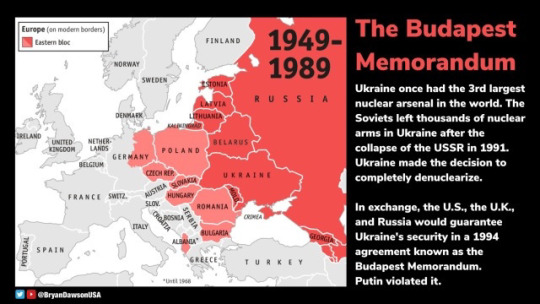
👉🏿 https://www.brookings.edu/blog/up-front/2014/11/06/did-nato-promise-not-to-enlarge-gorbachev-says-no/
👉🏿 https://www.tumblr.com/odinsblog/686191406300184576/appeasement-does-not-work-appeasement-didnt
👉🏿 https://www.tumblr.com/odinsblog/684530801484922880/believing-putins-reasons-for-invading-ukraine
👉🏿 https://www.tumblr.com/odinsblog/742088177664344064/violated-agreements-1991-russia-cosigns
#politics#ukraine#russia#dmytro kuleba#russian propaganda#nato#russian colonialism#nato expansion#russian imperialism#mikhail gorbachev#russia is a terrorist state#warsaw pact#russian expansion#russian fascism ☭#soviet union#tankies#vladimir putin is a war criminal#baltic states#🇺🇦
97 notes
·
View notes
Text
In the democratic world is "Never again", in the Russian world - "We can and will proudly repeat"
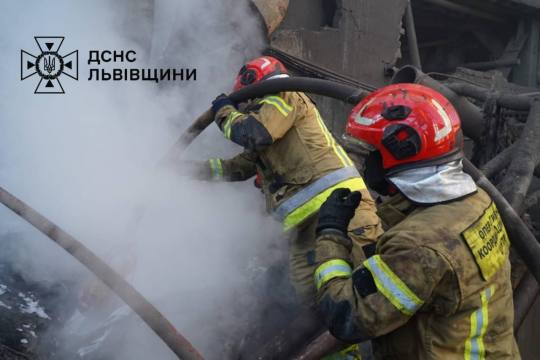
Attacked electricity generation and transmission facilities in Poltava, Kirovohrad, Zaporizhzhia, Lviv, Ivano-Frankivsk, and Vinnytsia regions.
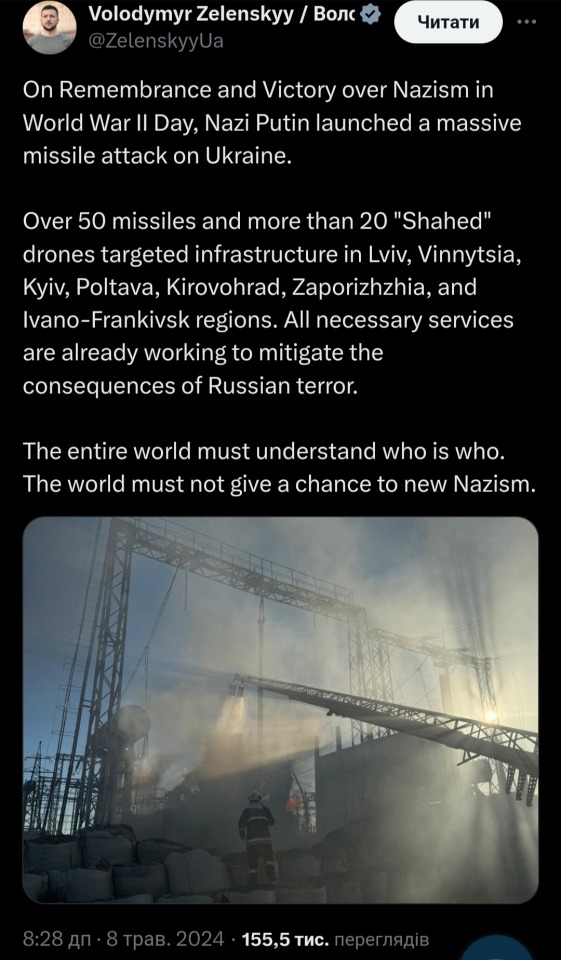
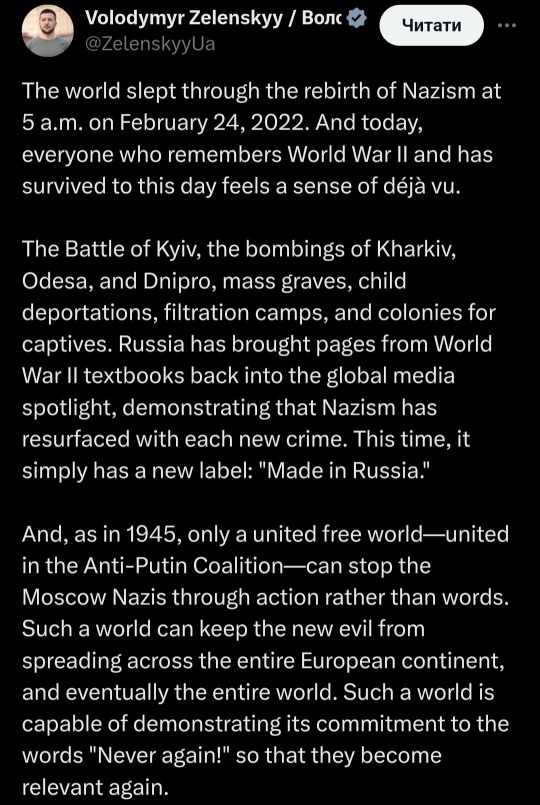
I urgently recommend you to watch Zelenskyy's speech. I was literally crying from the start. I even downloaded video but Tumblr once again crushed for me. I'm sorry.
Back to modern time.
At night, Russians attacked three DTEK thermal power plants. The equipment was seriously damaged.
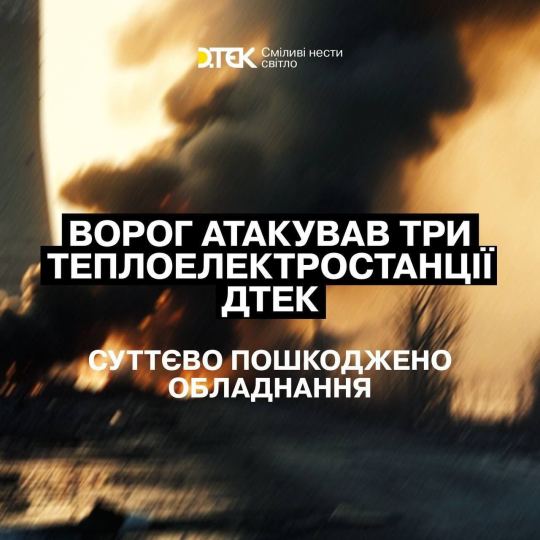
This is the fifth massive shelling of the company's energy facilities in the last month and a half.
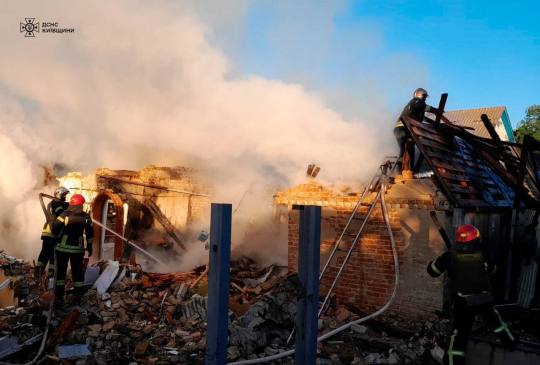
In the Kyiv region, 13 private buildings were destroyed and damaged as a result of the night shelling. Debris fell in four districts of the region.
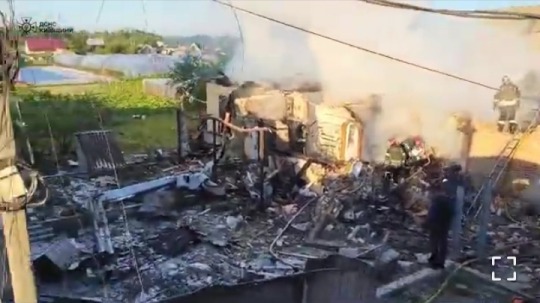
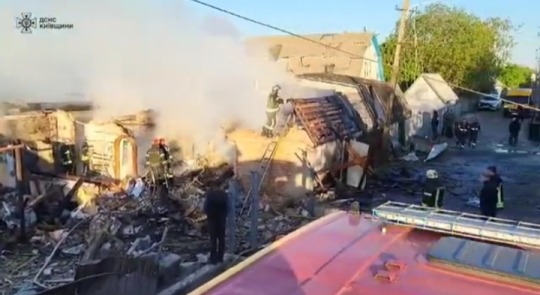
In the Lviv region, the occupiers attacked a gas storage facility in Stryi district and a thermal power plant in Chervonohrad district.
An 8-year-old child was injured in Kirovohrad region. A critical infrastructure facility was damaged in the region, and 13 houses were destroyed.
At night, on May 8, at 02:42, in Kharkiv, air defense forces shot down two Shaheds in the northern part of the city. No damage and no casualties - HOVA.
About 15 settlements of the Kharkiv region were hit by enemy artillery and mortar attacks: Sinkivka, Stepova Novoselivka, Berestove, and others. Dvorichanske and Sinkivka came under aerial bombardment.
17:00 с. Kucherivka, Kupyansk district. A private house was burning as a result of the shelling.
May 7, 09:30 a.m. Cherkaski Tyshky, Kharkiv district. The roofs of two private houses were damaged as a result of hostile shelling.
Ukrainian troops repelled 16 attacks in the Kupyansk sector over the last day, including in the areas of Sinkivka, Pishchane, and Berestove in Kharkiv region.
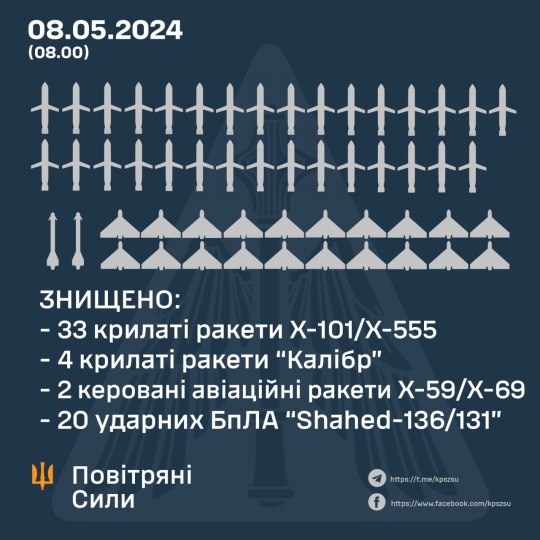
The Ukrainian Air Force destroyed 39/55 missiles and 20/21 UAVs:
▪️ 0/1 X-47M2 Kinzhal aerial ballistic missiles;
▪️ 0/2 Iskander-M ballistic missiles;
▪️ 4/4 Kalibr cruise missiles;
▪️ 33/45 X-101/X-555 cruise missiles;
▪️ 0/1 Iskander-K cruise missiles;
▪️ 2/2 X-59/X-69 guided missiles;
▪️ 20/21 Shahed-131/136 strike UAVs.
Thanks to the Air Force, I woke up today. And I even had the luxury of not having to go to the corridor, even though my region was under attack.
Back to World War II.

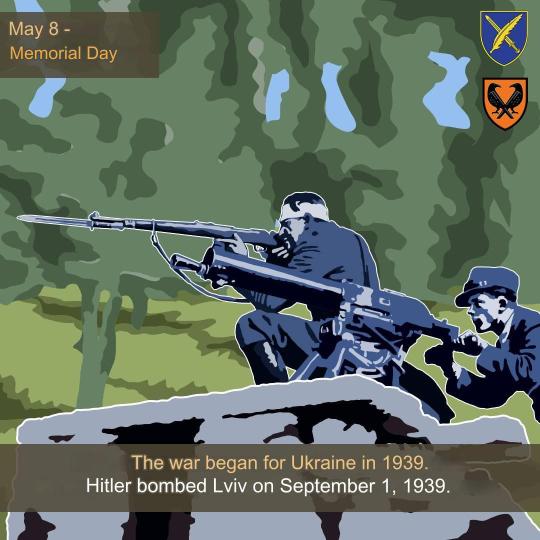
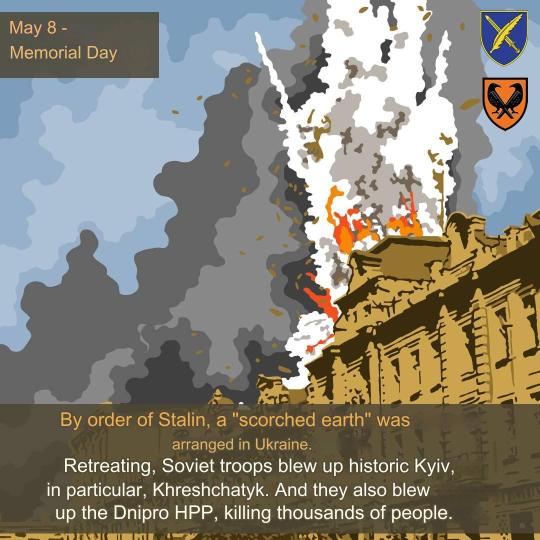

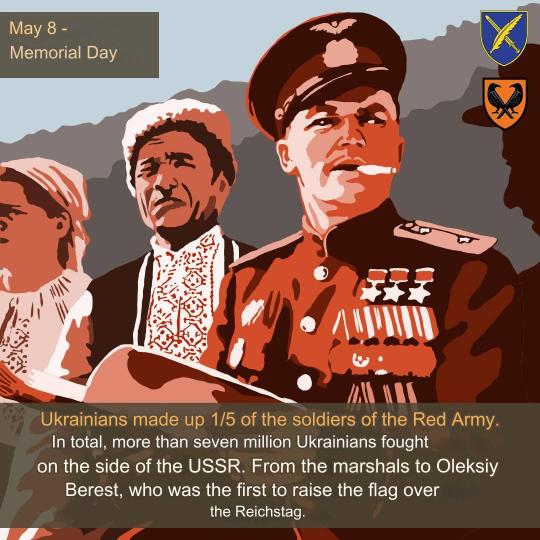
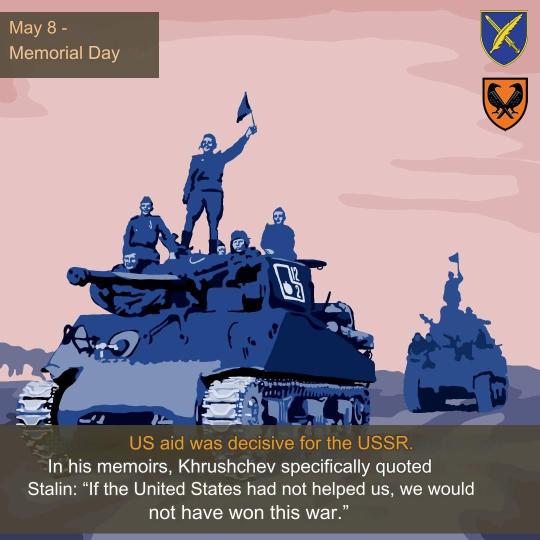

Photos from AFUStratCom.
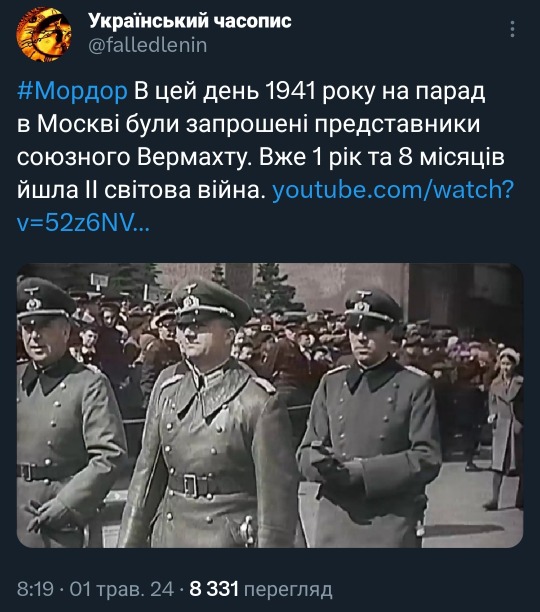
#Mordor On this day in 1941, representatives of the Allied Wehrmacht were invited to a parade in Moscow. World War II had been going on for 1 year and 8 months.
Modern time:

On this day in 2014, Ukrainian miners spoke about the torture of the Russian occupiers in Donetsk and showed a tattoo that was almost cut off by a light bulb.
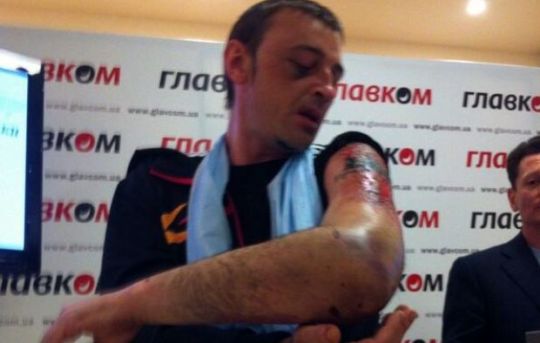

Russia never changed. Russia never learned.

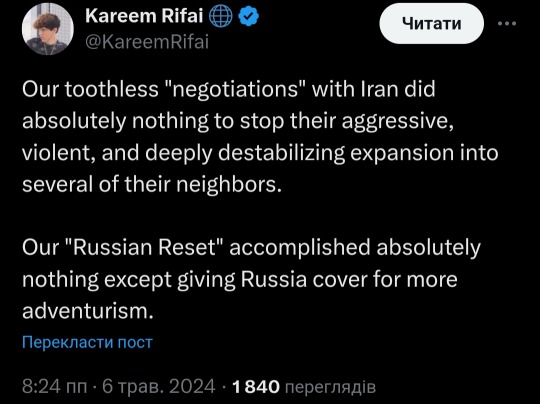
Total victory and liberation of Ukraine is the only possible scenario for peace.
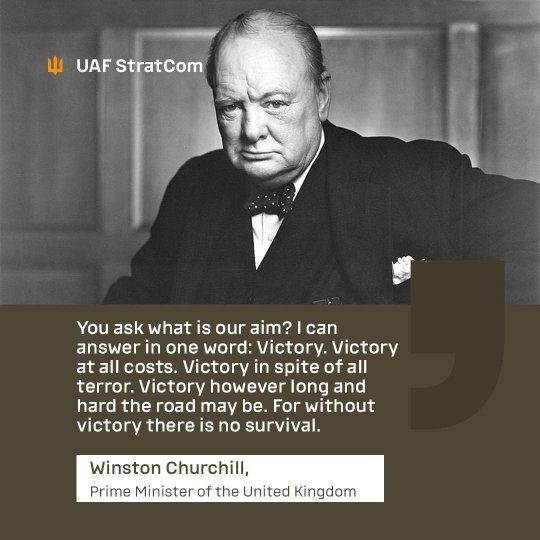
#ukraine#russo ukrainian war#russian invasion of ukraine#russia is a terrorist state#russia war crimes#war crimes#russia must burn#stop the genocide#genocide#world#united states#standwithukraine#stand with ukraine#arm ukraine#important#signal boost#history#world war 2#український tumblr#український тамблер#russian terrorism#stop terrorism#stop russia#fuck russia#war in ukraine#video#unmute#sound on#link click#war
59 notes
·
View notes
Text


the commission had Leon Trotsky - who was a important figure in the Russian revolutions, was second in command to Valdimir Lenin, and who opposed Stalin's politics - assassinated.

the file this is found in is addressed as one of Five's cases ↑
transcript:
MEMORANDUM ON INTENDED EVENTS
RE: THE DEATH OF LEON TROTSKY
August 21, 1940
Background: On 24 May 1940, Trotsky survived a raid on his villa by armed assassins led by the NKVD agent Iosif Grigulevich and Mexican painter David Alfaro Siqueiros. Trotsky's 14-year-old grandson, Vsevolod Platonovich "Esteban" Volkov (born 7 March 1926), was shot in the foot, and a young assistant and bodyguard of Trotsky, Robert Sheldon Harte, was abducted and later murdered. Trotsky's other guards fended off the attackers.
Event to Occur: With the previous attack thwarted, the following is to take place, ensuring continuity. Trotsky has already created cover by claiming that Josef Stalin would seek additional assassination attempts.
On 20 August 1940, Trotsky will be attacked in his study with an ice axe by one Mr. Mercader, whom he has not previously met. Our agent will assume the guise of Mr. Mercader. The blow to his head is to be bungled and fail to kill Trotsky instantly, but nonetheless prove fatal. A struggle will ensue and though the agent is to be captured, his extraction will occur at a future moment of Commission discretion, at which time a bosy double will be placed as perpetrator and will stand trial for the assault. His sacrifice for the Commission will be noted in the logs.
Witnesses are to see the following and make their claims to the new media and local law enforcement: that Trotsky spat on Mercader and began struggling fiercelt with the assasilant, which results in Mercader's hand being broken. Hearing the commotion, Trotsky's bodyguards burst into the room and nearly killed you, but Trotsky will stop them, stating that the assassin should be made to answer questions.
Trotsky will then be taken to a hospital, operated on, and survive for more than a day, dying at the age of 60 on 21 August 1940 from exsanguination and shocck. The agent will testify at trial and remain imprisoned until the moment of extraction and replacement by the secrificial unit.
A history of Trotsky's exile: In February 1929, Trotsky was deported from the Soviet Union to his new exile in Turkey. During his first teo months in Turkey, Trotsky lived with his wife and eldest son at the Soviet Union Consulate in Constantinople and then at a nearby hotel in the city. In April 1929, Trotsky, his wife and son were moved to the island of Buyukada (aka Prinkipo) by the Turkish authorities. On Prinkipo, they were moved into a house called the Yanaros mansion, where Trotsky and his wife lived until July 1933. During his exile in Turkey, Trotsky was under the surveillance of the Turkish police forces of Mustafa Kemal Pasha. Trotsky was also at risk from the many former White Army officers who lived on Prinkipo, officers who had opposed the October Revolution and who had been defeated by Trotsky and the Red Army in the Russian Civil War. However, Totsky's European supporters volunteered to serve as bodyguards and assured his safety.
Trotsky's house, the Yanaros mansion on the island of Buyukada in Turkey, as it

TROTSKY ASSASSINATION ATTEMPT
INTELLIGENCE SUMMARY
Place | Date | Hour | Summary of Events and Information | Remarks
MOSCOW, April | 2. | A deviation occured in the first agent's plot assassinate Leon Trotsky in May of 1940. | EF
5. | Progress in planning of the second plot, for August 20, 194, has progressed unhindered. | SB
MEXICO CITY May | 7. | Leon Trotsky will be in his study on August 20, 1940, as expected, and will be welcoming his guest, one Mr. Mercader, whom he has never met previously. | -
9. | The tool to be used for this attack, an ice axe, will be placed in discrete location No. 224-MC-B12, Annex 16, per Commission protocol. | EF
20. | The Mission objective will be carried out, after which time the parameters of expected history will be reset to their correct trajectories. | TD
Instructions regarding Intelligence Summaries are contained in Regula II and the Management Manual. Title pages will be prepared in manuscript.

To CASE MANAGER 0038 From FIELD AGENT 00293
Subject Trotsky assassination attempt
Pneumatic Transit Code
[multiple strongs of number as seen in the image above]
My recommendation is to reconsider our current outlook concerning the viability of the subject's tool of action, the ice axe, in light of recent events. The project has stalled at numerous points over the past months and contines to progress at a menial pace.
Should the current iteration of the device be completed as is it will fail to provide enough force to puncture the fuel tank given the density of the aluminum alloy used in the manufacturing of the encasement.
I expect that the subject will proceed as required.
29 notes
·
View notes
Text
Amphibian Perucetus and giant scissor sharks
In previous posts, we considered Moropiton and Poseideongenia, two groups of animals that migrated to Siberia through the Ural Sea in the Late Carboniferous. Before moving on to the actual descendants of these Seymouries - the Angarians themselves - we can distract ourselves with the creatures that the Moscow settlers could encounter on a vegetable raft.

The Dynasty of marine amphibians
Let's start with a strange speculative kind that shouldn't exist. Ichthyocetus, the "whale fish", is a large animal reaching a size of up to 2.5 meters and is a direct descendant of tetrapods of the Moscow Sea, primarily tulerpeton. The latter is known primarily for its six-toed limbs developed relative to other modern tetropods, as well as for its location. The fact is that the remains of the tulerpiton were located 200 kilometers from the supposed shore: this and the very structure of the body of the tetrapod under discussion suggest that the animal lived in shallow water, breathing atmospheric air (no bones corresponding to the gills were found, and the head was separated from the body - i.e. the tulerpeton could lift its head) and moving forward using the legs, pushing them off the bottom (their strength would not be enough to allow the toolerpeton to move on land). It is possible that some tetrapods could have stayed in this habitat, becoming the main predators of shallow waters, where larger predators like eugeneodonts or placoderms could not move normally.

Tulerpeton, 360 m.y.a. Art by Dmitry Bogdanov

Tulerpeton found fossils
Ichthyocetus is the last representative of this hypothetical clade, whose population was almost completely destroyed by the decline in sea level due to the new peak of the Karoo ice Age. His basic diet is benthos, which he can find in the buried ground: echinoderms, starfish and lilies, as well as, if luck smiles, the corpses of marine animals that the surf brings. He could also purposefully hunt for moropitons if they swam too deep. The bones of ichthyocetus are incredibly dense; this allows it to stay in the water during strong waves. This animal is able to sense the approach of a storm - then it tries to find the shore and crawl out onto it, burrowing into the sand; then they are most vulnerable. If it is impossible to find the shore, then the ichthyocetuses go to depth, swallowing air, where they can stay for 3-4 hours. Sometimes this tetropods go deep in search of new food sources, where they can catch young eugeneodonts or small fish. Surprisingly, ichthyocetuses are not the largest representatives of their clade (let's call it Ichthyocetusae): some species could grow up to 3 meters and lead a more pelagic lifestyle.
They usually appeared during periods of intense glaciation with a reduction in their original habitat. Unfortunately, this time climate change has become insurmountable.
Something about scissor sharks
If the meeting of protoseimurians with their "cousin" was unreliable, then the same cannot be said about eugeneodonts. The largest animals of the sea were the edestus, or protopirates. Although the largest protopirate species, E. vorax, could reach 6 meters (making it the largest predator of its time), the Moscow species were somewhat smaller and reached a maximum of 4 meters. These sizes correspond to the modern white shark and mako shark.

Edestus, 313—307 m.y.a. Art by Dmitry Bogdanov

Comparison of the four species of Edestus. Authors of this illustration is Leif Tapanila and Jesse Pruitt
Both poseideonogenes and moropitons encountered these cartilaginous fish - most likely, they were four-meter E. heinrichi and E. triserratus commensurate with ichthyocetus. Most likely, the edestus hunted numerous nautiloids and other soft-bodied prey and could well attack rafts, mistaking them for a dead cephalopod with a spiral shell. The protoseimuria themselves would not be of interest to the edestus - they are too small. That's what saved them.
#original species#spec evo#spec bio#speculative biology#speculative zoology#artists on tumblr#paleoart#art#paleontology#paleozoic
51 notes
·
View notes
Text
Ukraine is said to have provided intelligence which led to deadly attacks by insurgents on Russian mercenaries in the West African nation of Mali. FYI: Tinzaouaten, the city closest to the attacks in Mali, is 2,440 miles/3,928 km from Ukraine's port city of Odesa.
Ukraine’s military intelligence agency has claimed it was involved in an ambush that killed fighters from Russia’s Wagner group in the west African nation of Mali, thousands of miles away from the frontline in Ukraine.
A Telegram channel linked to the Wagner leadership on Monday admitted the group had suffered heavy losses during fighting in Mali last week.
It said Wagner and the Malian armed forces had “fought fierce battles” over a five-day period against a coalition of Tuareg separatist forces and jihadi groups, who had used heavy weapons, drones and suicide bombers. Numerous Wagner fighters, including a commander, Sergei Shevchenko, were killed, the channel said.
Andrii Yusov, spokesman for Ukraine’s GUR military intelligence agency, said on Monday that “the rebels received necessary information, and not just information, which enabled a successful military operation against Russian war criminals”.
Yusov did not say whether Ukrainian military personnel were involved in the fighting or were present in the country. He said the agency “won’t discuss the details at the moment, but there will be more to come”.
The Mali government, which has been fighting various insurgencies in the north of the country for more than a decade, requested help from Wagner after a military junta took power in 2020.
The Wagner Group is still around but under new management since Putin killed off its founder Yevgeny Prigozhin.
So why is Russia in Africa?
The group is also active across Africa, and continues to be so even after Prigozhin was disgraced following a failed coup attempt last summer. He later died after an explosion onboard his plane, widely believed to have been ordered by the Kremlin, but Wagner’s influence in Africa remains.
“For Moscow, the African countries where Wagner is present is just a zone of interest that allows it to get hold of resources – gold, diamonds, gas and oil – and the money goes to finance Russian aggression,” said Serhii Kuzan, director of the Ukrainian Security and Cooperation Center in Kyiv, explaining why Ukraine might want to target Wagner in Africa.
He added that the raids had additional benefits for Kyiv: “liquidating” some of the most experienced Wagner fighters and lowering the overall military potential of the group, and also exacting revenge for war crimes in Ukraine.
“A significant part of the destroyed fighters got military experience in Ukraine, where they carried out hundreds or thousands of war crimes … these crimes should be punished, and Russian war criminals should know that they will never be safe,” said Kuzan.
Ukrainian intelligence has a long reach and Ukraine has a long memory for war crimes committed by the invaders.

On a linguistic note, GUR should realistically be written HUR. The full name of Ukrainian military intelligence is: Головне Управління Розвідки Міністерства Оборони України (Main Directorate of Intelligence of the Ministry of Defense of Ukraine). For short, that's Головне Управління Розвідки.
In Russian, Г is pronounced like the English hard G. In Ukrainian, Г is pronounced like a regular English H. There's a separate letter in Ukrainian for English hard G written like this Ґ. But the Soviet Union tried to suppress this letter because its existence was another reminder that Ukrainian is not Russian. So there's been some lingering alphabetic confusion over the use of this letter. But I promise you that it is preferable to transliterate ГУР as HUR.
#ukraine#mali#west africa#russia#russian mercenaries#yevgeny prigozhin#the wagner group#tuareg separatists#hur#ukrainian military intelligence#serhii kuzan#main directorate of intelligence of the ministry of defense of ukraine#russia's war of aggression#vladimir putin#россия#мали#африка#чвк вагнер#евгений пригожин#владимир путин#путин хуйло#путин - военный преступник#добей путина#руки прочь от украины!#геть з україни#малі#сергій кузан#головне управління розвідки міністерства оборони україни#слава україні!#героям слава!
22 notes
·
View notes
Text


Does the helicopter footage of the Crocus City Hall (Moscow) remind you of something? The open Chernobyl reactor would be my answer...
#moscow attack#moscow#moscow under attack#moscow terror attack#crocus city hall#chernobyl#russia#russian#russians#ISIS#msocow terrorist attack
0 notes
Photo

Armenia between 1918 and 1921
Atlas of the Ethno-Political History of the Caucasus, Arthur Tsutsiev, Yale University Press, 2014
by cartesdhistoire
In May 1918, the republics of Georgia, Azerbaijan and Armenia were created. But the new Armenian state finds itself alone facing the Turkish army, which crosses the former Russian border in March. After taking Alexandropol, she marched on Yerevan, but was stopped at Sardarapat on May 24, 1918; the small republic of Armenia is saved, even if at the Treaty of Batoum in June, it must cede a good part of its territory to Turkey.
Border disputes between the three Caucasian republics are innumerable, in particular with Azerbaijan, a republic with a Turkish (“Tatar”) majority which takes the name of the ancient Adharbaijan of the south of the Araxes. The conflict mainly concerns Nakhichevan and Nagorno-Karabakh; the latter, with an overwhelming Armenian majority, has been de facto independent since the summer of 1918. But Azerbaijan, a de facto Turkish protectorate, was Sovietized from April 1920. In May it was the turn of Karabakh and in July that of part of Nakhichevan. At the same time, Turkish military aid did not weaken and the Turkish-Azerbaijani pressure was such that Armenia had to accept the temporary occupation by the Red Army of the three territories on August 10, 1920.
The collusion between the Bolsheviks and the Kemalist Turkish nationalists sealed the fate of the Republic of Armenia, weakened by the Bolshevik uprising of May 1920 and the border conflicts. Turkey attacked the Republic of Armenia in September 1920 and massacred Armenians in the town of Kars; Armenia must accept the drastic conditions of the Treaty of Alexandropol in December 1920, supplemented by the Soviet-Turkish agreements of Moscow and Kars which fixed the western border of Soviet Armenia in 1921; Nakhichevan and Nagorno-Karabakh are declared autonomous under the protection of Azerbaijan: Nakhchivan is an exclave to the west of Azerbaijan while Nagorno-Karabakh is an enclave in Azeri territory.
95 notes
·
View notes
Text
(This situation is very much a developing thing and there's a lot of conflicting and wrong information out there right now. I know I've been absent lately, but I'm keeping an eye on things.)
Russian mercenary boss Yevgeny Prigozhin said on Saturday his Wagner fighters had crossed the border into Russia from Ukraine and were prepared to go "all the way" against Moscow's military, hours after the Kremlin accused him of armed mutiny.
As a long-running standoff between Prigozhin and the military top brass appeared to come to a head, Russia's FSB security service opened a criminal case against him, TASS news agency said. It called on the Wagner private military company forces to ignore his orders and arrest him.
Wagner fighters had entered the southern Russian city of Rostov, Prigozhin said in an audio recording posted on Telegram. He said he and his men would destroy anyone who stood in their way.
Prigozhin earlier said, without providing evidence, that Russia's military leadership had killed a huge number of his troops in an air strike and vowed to punish them.
He said his actions were not a military coup. But in a frenzied series of audio messages, in which the sound of his voice sometimes varied and could not be independently verified, he appeared to suggest that his 25,000-strong militia was en route to oust the leadership of the defence ministry in Moscow.
Security was stepped up on Friday night at government buildings, transport facilities and other key locations in Moscow, TASS reported, citing a source at a security service.
Russian President Vladimir Putin was getting around-the-clock updates, TASS said, while the White House said it was monitoring the situation and would consult with allies.
Kyiv, meanwhile, said the major thrust in its counteroffensive against Moscow's invasion had yet to be launched. "The main blow is still to come," Deputy Defence Minister Hanna Maliar told Ukrainian television.
A top Ukrainian general reported "tangible successes" in advances in the south - one of two main theatres of operations, along with eastern Ukraine.
'OBEY PRESIDENT,' GENERAL SAYS
The deputy commander of Russia's Ukraine campaign, General Sergei Surovikin, told Wagner fighters to obey Putin, accept Moscow's commanders and return to their bases. He said political deterioration would play into the hands of Russia's enemies.
"I urge you to stop," Surovikin said in a video posted on Telegram, his right hand resting on a rifle.
The standoff, many of the details of which remained unclear, looked like the biggest domestic crisis Putin has faced since he sent thousands of troops into Ukraine in February last year.
Prigozhin, a one-time Putin ally, in recent months has carried out an increasingly bitter feud with Moscow. Earlier on Friday, he appeared to cross a new line, saying the Kremlin's rationale for invading Ukraine, which it calls a "special military operation," was based on lies by the army's top brass.
Wagner led Russia's capture of the Ukrainian city of Bakhmut last month, Russia's biggest victory in 10 months, and Prigozhin has used its battlefield success to criticise the leadership of the defense ministry with seeming impunity - until now.
For months, he has openly accused Defence Minister Sergei Shoigu and Russia's top general, Valery Gerasimov, of incompetence.
Army Lieutenant-General Vladimir Alekseyev issued a video appeal in which he asked Prigozhin to reconsider his actions. "Only the president has the right to appoint the top leadership of the armed forces, and you are trying to encroach on his authority," he said.
UKRAINE SAYS MAJOR THRUST AHEAD
On the ground in Ukraine, at least three people were killed in Russian attacks on Friday, including two who died after a trolleybus company came under fire in the city of Kherson, regional officials said.
Addressing the pace of the Ukrainian advances, several senior officials on Friday sent the clearest signal so far that the main part of the counteroffensive has not yet begun.
"I want to say that our main force has not been engaged in fighting yet, and we are now searching, probing for weak places in the enemy defences. Everything is still ahead," the Guardian quoted Oleksandr Syrskyi, the commander of Ukraine's ground forces, as saying in an interview with the British newspaper.
General Oleksandr Tarnavskyi, commander of Ukraine's "Tavria," or southern front, wrote on Telegram: "There have been tangible successes of the Defence Forces and in advances in the Tavria sector."
Tarnavskyi said Russian forces had lost hundreds of men and 51 military vehicles in the past 24 hours, including three tanks and 14 armoured personnel carriers.
Although the advances Ukraine has reported this month are its first substantial gains on the battlefield for seven months, Ukrainian forces have yet to push to the main defensive lines that Russia has had months to prepare.
96 notes
·
View notes
Text
NATO is developing a political strategy to counter Russia under the assumption that the Kremlin’s foreign policy will stay Vladimir Putin-like—if not run by the Russian president himself—for the long term.
It’s a part of a broader NATO effort to move away from the post-Cold War peace dividend of the 1990s, when allies tried to placate Russia by establishing diplomatic relations and removing troops from Eastern Europe. After the start of Russia’s full-scale invasion of Ukraine, the allies must now find a way to deal with a Moscow that will almost certainly remain hostile and a threat to NATO for the foreseeable future.
“We all understand that Russia will not change, even when someone will replace Putin one day,” said Estonian Defense Minister Hanno Pevkur. “When there is no change on the political system level, then we will see no change.”
But across 32 nations, NATO needs to figure out what kind of plan it’s pursuing. Is it a containment strategy as the 71-year-old Putin ages? Do the allies wait for Putin to die?
Russia is already putting pressure on the West to break its consensus over Ukraine and soften anti-Kremlin tilt. Moscow has launched more concerted hybrid attacks than the alliance has seen at any point since the end of the Cold War, according to both current and former NATO officials. That effort has included cyberattacks, sending waves of immigrants to the border with Finland, removing border buoys along the Narva River with Estonia, suspected arson attacks, and assassination plots.
Some of Russia’s actions over the course of the covert campaign might even rise to the threshold of armed conflict, but the first step, officials said, is to stay cool.
“Russia is trying to make us run around like wet hens and lose our heads,” said Tobias Billstrom, Sweden’s foreign minister. “These are attempts by the security services and the military forces of Russia to try and keep us busy, so that we will fail in our support to Ukraine and ultimately bow down to Russia’s wishes.”
The other prong in Russia’s plan to undermine NATO is an effort to continue to build its conventional strength. NATO expects Russia to field thousands more troops—to fight in Ukraine or elsewhere—by the time that the alliance’s new Russia strategy is ready. Moscow is still likely recruiting about 30,000 new troops a month, according to a senior NATO official. “They can probably continue to absorb these very high losses for quite some time,” added the official, who spoke on condition of anonymity based on ground rules set by the alliance.
NATO estimates that Russia can continue to subsist in a wartime economy for at least another three to four years. Putin is banking on exhausting Ukraine with Russia’s greater numbers of troops and resources—even if there’s a staggering cost in lives.
Yet the numerical edge hasn’t helped the Russians gain ground in Ukraine so far this year. NATO officials assess that Russia has not achieved a single one of its strategic objectives in Ukraine. The Kremlin’s offensive around Ukraine’s eastern city of Kharkiv has advanced several miles, but progress has mostly fallen off because Russia doesn’t have enough troops—or enough quality troops, said Royal Netherlands Navy Adm. Rob Bauer, the chair of NATO’s Military Committee.
“The Ukrainians understand what they’re fighting for,” Bauer said. “The Russians have no clue.” He added that Russia had to take troops from another part of the front line to mount the Kharkiv offensive and didn’t have the proper trainers and training facilities that it needed to generate tough enough soldiers to break through Ukrainian lines.
Both sides are looking for openings to launch another counteroffensive, but it’s not likely to take place until they deal with manpower shortages. Ukraine is also waiting for Western munitions to arrive en masse. Russia has improved its coordination of cruise and ballistic missiles with drones since the beginning of the war, too, in an effort to overwhelm Ukrainian defenses.
But even as Russia has combined artillery, infantry, and air attacks in Ukraine, NATO officials believe that Moscow is still not conducting effective maneuver warfare that sees a precise sequence of shelling and tank thrusts before ground troops move ahead.
“Ukraine is actually not a joint fight,” Bauer said. “It is actually a ground war, in essence. If they want to fight NATO, they need to do more than what they do now. They need to be able to fight with air, maritime, and land, and space, and cyber in a synchronized way, which we haven’t seen in Ukraine.” Russia would also need a combined military approach to fight NATO, Bauer said.
Western officials and experts believe that Russia will need to rebuild equipment, train more soldiers, and get proficient in new weapons systems to fully regenerate. Bauer said that Russia could get its military back in the shape it was before the Ukraine invasion within three to five years after the shooting stops, but getting to the status of a complete, modern military that could challenge the alliance with the threat of a full-scale invasion would take more time.
And Russia is running out of its vast stocks of Soviet-era weaponry, forcing the Kremlin to limit its war aims. But it has also held back stocks of drones and missiles in order to conduct major attacks, such as the one on a Kyiv children’s hospital earlier this month.
Ukraine’s long-range strikes have had an impact, NATO officials said, cutting Russian oil refining capacity by about 17 percent and forcing the Kremlin to impose domestic restrictions on gasoline exports. NATO nations are also looking to curb Russia’s so-called shadow fleet of 400 to 600 vessels that are helping the Kremlin get around sanctions by illegally transiting oil by sea.
But even with the economic hemorrhaging, there’s little doubt that Russia will continue beyond Ukraine. “They’re crazy,” said Ukrainian Strategic Industries Minister Oleksandr Kamyshin. “They’ve been fighting with us for decades—for centuries. They’ve been fighting everyone around, from Afghanistan to Georgia. We have to be ready for that.”
The lesson learned from Russia’s two invasions of Ukraine—the initial attack on Crimea and the eastern Donbas region in 2014 as well as the full invasion eight years later—is that Putin could use the same pattern in an attack on NATO territory, said Pevkur, the Estonian defense minister: biting off a small piece of territory and then going for more. There is a fear that Putin might be able to destroy one part of NATO before the alliance’s political leaders have the ability to respond.
“For us, there is no difference [if] they are coming to Tallinn or [if] they are coming to Berlin,” he said. “There is no difference if it’s just a localized partial attack or a full-scale attack.”
Other allies agree. “You can’t rule out anything when it comes to Russia,” said Billstrom, the Swedish foreign minister. “The only thing Russia understands is power and strength.”
The alliance’s military plans are still currently in peacetime mode, Pevkur said. The question is whether NATO nations will have the political willpower to make the tough decision to activate Article Five in a wartime scenario—and to resist Russia’s efforts to paralyze the North Atlantic Committee, the panel of military decision-makers who would make that call.
“I hope that everyone behind that table—32 members—are crystal clear that if there is a need, we have the votes,” Pevkur said.
NATO is still filling in some of the gaps in its war plans to make apparent to Russia the costs of dipping its toe into a wider regional conflict. The alliance needs more munitions and air defense, weapons that are in short supply all over the world. It even needs to look toward putting down more of its own military bases in Europe, U.S. House Foreign Affairs Committee Chairman Michael McCaul told Foreign Policy in a recent interview.
The West has to be ready to respond to Russian nuclear coercion. And it has to be ready for a challenge in any domain, or at any level.
“The reality is we have to be ready for a hybrid challenge, a conventional challenge, possibly a nuclear challenge, or all three,” the second senior NATO official said. “That’s the way the Russians think: They see a continuum of war.”
NATO can dial up and dial down the response, but officials say that the allies have to be postured permanently to manage Russia’s activity and threats. “We have to get away from this idea that it’s either on or off,” the second senior NATO official added.
That’s a stark contrast from where NATO allies have been for decades: letting war plans and troop contingents on the eastern flank atrophy.
“There was hope after [former Russian President Boris] Yeltsin came,” Pevkur said. “There was hope after the collapse of the Soviet Union.”
What NATO countries hope—especially the front-line Baltic states—is that the allies have learned their lesson about Russia.
“This is the consequence [of] what we did, hoping that Russia will be on a new political system,” Pevkur added. “They weren’t.”
10 notes
·
View notes
Text


On 15th June 1996 Sir Fitzroy MacLean, the Scottish soldier, diplomat, politician and author, died.
Fitzroy Maclean was a British diplomat who was one of the first Westerners to explore Soviet Russia. He was a founder member of the SAS, and later liaised on behalf of the allies with the Partisans in Yugoslavia.
Before World War II Fitzroy Maclean served as a diplomat at the British embassy in Moscow, from where he made several notable journeys to Siberia, the Caucasus and Soviet Central Asia.
During the war he served in the SAS and was also involved with the Free French forces in Iran. In 1943 he was dropped by parachute into German-occupied Yugoslavia as Winston Churchill's personal envoy and Commander of the British Military Mission to Tito and the partisans. He recorded some of these experiences in 'Eastern Approaches', a classic memoir, which has sold more than a million copies.
McLean wrote many other best-selling books and in addition to serving as Under Secretary for War in the post-war Churchill and Eden governments. Diplomat, soldier, statesman, traveller, writer - a true modern hero - Sir Fitzroy was often put forward as the model for his friend Ian Fleming's 'James Bond', a distinction he neither accepted nor denied.
Fitzroy Maclean died while he was visiting friends in the English village of Hertford having just completed a swim at the age of 85!!!, he was stricken by a heart attack and died instantly, I think he would rather have gone that way rather than faded away. . He was returned to the location of the family home in the village of Strachur, Argyll County and was interred in the cemetery of historic Parish Church.
There’s a great article about the man here https://warisboring.com/fitzroy-maclean-fought-the-nazis-blew-up-forts-and-met-a-king/
14 notes
·
View notes